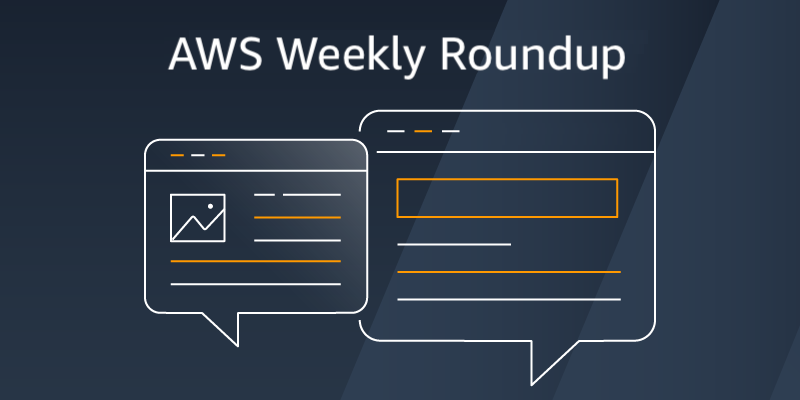AWS News Blog
Category: Amazon Elastic Container Service
AWS Weekly Roundup — Amazon ECS, RDS for MySQL, EMR Studio, AWS Community, and more — January 22, 2024
As usual, a lot has happened in the Amazon Web Services (AWS) universe this past week. I’m also excited about all the AWS Community events and initiatives that are happening around the world. Let’s take a look together! Last week’s launches Here are some launches that got my attention: Amazon Elastic Container Service (Amazon ECS) […]
AWS Weekly Roundup—Amazon Route53, Amazon EventBridge, Amazon SageMaker, and more – January 15, 2024
We are in January, the start of a new year, and I imagine many of you have made a new year resolution to learn something new. If you want to learn something new and get a free Amazon Web Services (AWS) Learning Badge, check out the new Events and Workflows Learning Path. This learning path […]
Amazon ECS supports a native integration with Amazon EBS volumes for data-intensive workloads
Today we are announcing that Amazon Elastic Container Service (Amazon ECS) supports an integration with Amazon Elastic Block Store (Amazon EBS), making it easier to run a wider range of data processing workloads. You can provision Amazon EBS storage for your ECS tasks running on AWS Fargate and Amazon Elastic Compute Cloud (Amazon EC2) without […]
Detect runtime security threats in Amazon ECS and AWS Fargate, new in Amazon GuardDuty
Today, we’re announcing Amazon GuardDuty ECS Runtime Monitoring to help detect potential runtime security issues in Amazon Elastic Container Service (Amazon ECS) clusters running on both AWS Fargate and Amazon Elastic Compute Cloud (Amazon EC2). GuardDuty combines machine learning (ML), anomaly detection, network monitoring, and malicious file discovery against various AWS data sources. When threats […]
AWS Fargate Enables Faster Container Startup using Seekable OCI
While developing with containers is becoming an increasingly popular way for deploying and scaling applications, there are still areas where improvements can be made. One of the main issues with scaling containerized applications is the long startup time, especially during scale up when newer instances need to be added. This issue can have a negative […]
Learn How to Modernize Your Applications at AWS Serverless Innovation Day
Join us on Wednesday, May 17, for AWS Serverless Innovation Day, a free full-day virtual event. You will learn about AWS Serverless technologies and event-driven architectures from customers, experts, and leaders. AWS Serverless Innovation Day is an event to empower builders and technical decision-makers with different AWS Serverless technologies, including AWS Lambda, Amazon Elastic Container […]
New – Amazon ECS Service Connect Enabling Easy Communication Between Microservices
Microservices architectures are a well-known software development approach to make applications composed of small independent services that communicate over well-defined application programming interfaces (APIs). Customers faced challenges when they started breaking down their monolith applications into microservices, as it required specialized networking knowledge to communicate internally with other microservices. Amazon Elastic Container Services (Amazon ECS) […]
AWS Week in Review – November 21, 2022
This post is part of our Week in Review series. Check back each week for a quick roundup of interesting news and announcements from AWS! A new week starts, and the News Blog team is getting ready for AWS re:Invent! Many of us will be there next week and it would be great to meet […]






